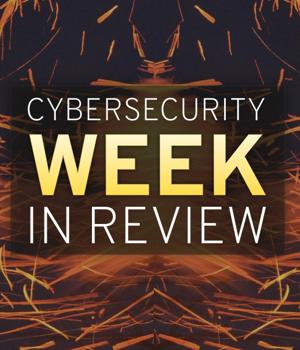Security News > 2022 > July > Week in review: Quantum-resistant encryption, attackers using deepfakes, Patch Tuesday forecast

Threat actors exchange beacons for badgers to evade endpoint securityUnidentified cyber threat actors have started using Brute Ratel C4, an adversary simulation tool similar to Cobalt Strike, to try to avoid detection by endpoint security solutions and gain a foothold on target networks, Palo Alto Networks researchers have found.
Attackers are using deepfakes to snag remote IT jobsMalicious individuals are using stolen personally identifiable information and voice and video deepfakes to try to land remote IT, programming, database and software-related jobs, the FBI has warned last week.
NIST selects 4 quantum-resistant encryption algorithmsThe U.S. Department of Commerce's National Institute of Standards and Technology has chosen the first group of quantum-resistant encryption tools, designed to withstand the assault of a future quantum computer, which could potentially crack the security used to protect privacy in the digital systems we rely on every day - such as online banking and email software.
Cybersecurity is driving digital transformation in alternative investment institutionsAs the alternative investment industry tackles a rapidly changing threat landscape, increased regulation, and a continuous need to innovate, most firms are increasing their DX and security budgets and cite security as critically important to their DX initiatives, according to IDC. Applying Shift Left principles to third party risk managementIn this Help Net Security video, Etai Hochman, CTO at Mirato, talks about applying Shift Left, a concept that originated with developers to find and prevent defects early in the software delivery process, to third party risk management.
The threat of quantum computing to sensitive dataIn this Help Net Security video, Carmi Bogot, VP Business Development at HUB Security, talks about the threat of quantum computing to sensitive data, and how confidential computing could be, at least, part of the answer.
Simplifying legal entity identification in the digital ageIn this video for Help Net Security, Karla McKenna, Managing Director and Philip Feairheller, Software Developer at the Global Legal Entity Identifier Foundation, review the model and the technologies underpinning the verifiable LEI - or vLEI - a new digital identity service designed to overcome this challenge by enabling organizations everywhere to make better decisions about who and what they trust when engaging in digital transactions.
News URL
Related news
- Microsoft March 2025 Patch Tuesday fixes 7 zero-days, 57 flaws (source)
- Choose your own Patch Tuesday adventure: Start with six zero day fixes, or six critical flaws (source)
- NIST selects HQC as backup algorithm for post-quantum encryption (source)
- Patch Tuesday: Microsoft Fixes 57 Security Flaws – Including Active Zero-Days (source)
- Week in review: NIST selects HQC for post-quantum encryption, 10 classic cybersecurity books (source)
- April 2025 Patch Tuesday forecast: More AI security introduced by Microsoft (source)
- Week in review: Probing activity on Palo Alto Networks GlobalProtect portals, Patch Tuesday forecast (source)
- Microsoft April 2025 Patch Tuesday fixes exploited zero-day, 134 flaws (source)
- Patch Tuesday: Microsoft Fixes 134 Vulnerabilities, Including 1 Zero-Day (source)
- April's Patch Tuesday leaves unlucky Windows Hello users unable to login (source)